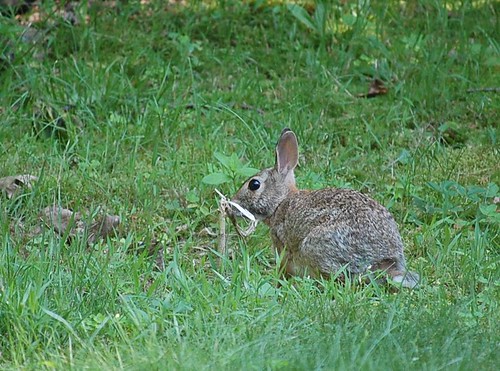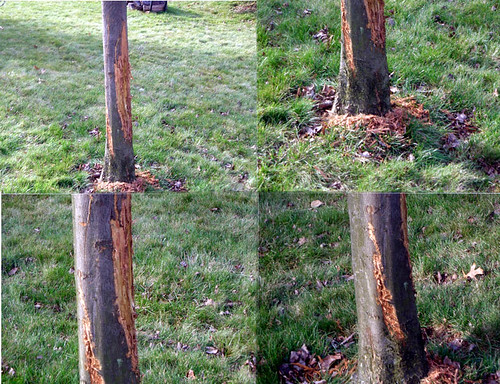Fox searching – 6 by iglooo101
Living in nature is beautiful, but it can seem so defeating. TheGardenLady has written columns about how she lives and has to practice good wildlife management to enable her garden to grow successfully. All the animals want to enjoy her garden to the extent that if allowed, there would be no garden.
Every gardener has this problem. If it is not deer, then it is rabbits or squirrels or…. you name it. One friend was happy when foxes moved into the culvert near the front of her driveway. She never saw a deer or rabbit on her property after that. But one can’t allow foxes to live on your property for a variety of reasons, so she had to have them removed. So far I haven’t seen foxes living on my property, but I have seen opposums, raccoons, woodchucks and at night, coming home sometimes I have smelled skunks. Those animals are all living harmoniously together, I hope, with Bambi and all his relatives as well as the numerous squirrels that live in my black walnut trees or hickory nut trees all inherited with the house when I bought it.
chipmunk by Dawn Huczek
But at least, I told myself, I didn’t have chipmunks on my property. As cute as chipmunks are they can cause a lot of serious problems including coming indoors where they can do damage. I knew that there were chipmunks in my county because I had seen one at the big hardware store about 5 miles away. There a little chipmunk was being fed by one of the cashiers who thought it was “sooo cute.” But I hadn’t seen chipmunks in my town or on my property until I looked out this morning. I saw my first chipmunk scurrying across my deck. And where there is one, I know there are many.






